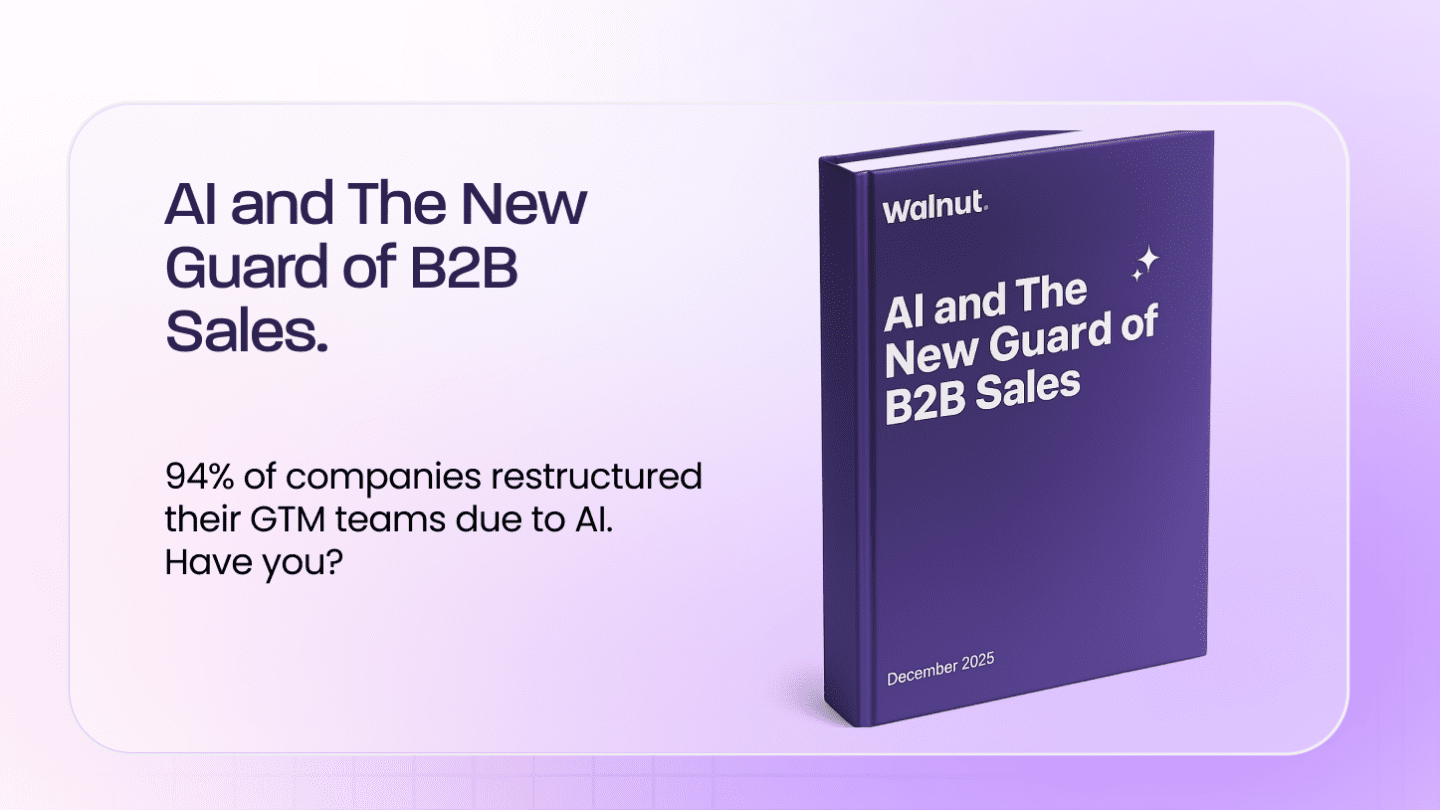Think you know everything there is to know about SaaS sales?
We’re here to challenge that assumption.
Many different sales models and strategies have pros and cons. Some encourage sales reps to create relationships with prospects, others focus on bringing unique value.
The Challenger strategy takes the ways sellers are prone to sell and challenges it.
The Challenger Sales Model: A background
The Challenger theory is the brainchild of authors Matthew Dixon and Brent Adamson, who explain the secret to being a successful salesperson in their book, The Challenger Sale.
The sales methodology argues that when selling complex, large-scale business-to-business solutions, the traditional adage of building a relationship with your potential customer and hammering home facts and features about the company is today considered a losing approach to sales.
Instead, the Challenger’s strategy is this:
A sales professional should question or challenge the prospect’s preconceived assumptions about solving their problem, build trust, and teach the lead a new way to solve their problem.
A Challenger aims to offer a new perspective to the buyer (teach them something new), tailor the sales pitch to the customer (position your product as the solution), then take control of the conversation (close the deal).
Why you need to understand the Challenger Sales Model
Buyers are savvier now than ever. With a wealth of online resources from review platforms to social media, they are well-equipped to educate themselves about the available solutions to their problems.
They no longer want to waste valuable time sitting through long, drawn-out sales calls with suppliers preaching about the virtues of their product.
That’s why the Challenger method is so effective. It works with the preference of buyers to conduct their own research, allowing them to learn and find out the solution in their way.
It’s counter-intuitive, and it flips the traditional sales model on its head—but it works.
What is the Challenger Model, anyway?
The Challenger Model shows potential customers how to take control of their business and solve their problems, avoiding the monotony of a traditional sales pitch. The authors of The Challenger Sale argue that when using the correct sales tools (like interactive demos), sales knowledge, and collateral, most sales reps can take control of the sale and close the deal.
Dixon and Adamson’s study found five types of salespeople. They are:
- The hard worker: These salespeople come early, stay late, and don’t shy away from making that extra cold call.
- The relationship builder: They’re the ones reaching out to the leads and offering to take them to baseball games. They usually find the gatekeeper and slowly build a connection.
- The lone wolf: These “my-way-or-the-highway” reps are often high performers, but are difficult to work with, to say the least.
- The problem solver: By getting to the root of the issue, this type of sales professional is great at resolving problems within your company or the prospect’s.
- The Challenger: By understanding the customer, their business, and their pains, the Challenger can encourage prospects to contemplate a different solution or perspective. They confidently make the prospect understand the value of their product and aren’t scared to pressure them.
By disrupting the buyer’s preconceived assumptions, the Challenger can offer an alternative solution to the customer’s problems and position their offering as a unique solution.
The Challenger model works on the three Ts principle:
- Teach the customer something valuable, and in doing so, strip them from their pre-conceived views of the solution to their problem.
- Tailor the pitch to solve the problem using your SaaS product and features uniquely. Creating personalized, interactive product demos that can be shared with the prospect throughout the sales process is a must.
- Take control of the conversation by breaking down the customer’s original thought process and showing confidence during pricing conversations.
Why SaaS companies benefit from the Challenger Model
People have changed how they buy products, especially when purchasing technical or software products.
Consider these statistics:
- When making a purchase decision, business-to-business (B2B) buyers spend 5-6% of their time discussing the solution with one supplier.
- B2B buyers spend 27% of this decision-making time researching independently online.
In a world of online software review platforms like G2, Capterra, Clutch, and many more, customers learn about software and services based on customer feedback without even speaking to the supplier.
These online reviews and platforms are great news for the Challenger sales model advocates. Customers no longer need a relationship with their suppliers; they can research and evaluate online information for themselves.
Sales reps and customers don’t have the time or desire to build relationships. Using the Challenger Model, the sales rep takes control and proves that their SaaS product solves the customer’s problem without lengthy relationship building.
The Challenger model can benefit online-savvy customers, and in turn, your B2B SaaS sales process.
Implement the Challenger Model for SaaS sales in 5 steps
The key objective of the methodology is to educate the customer instead of building a relationship with them. Teach them how to solve their problem and why your offering is the best solution.
Success hinges on how well you can teach your lead, but it also rests on your tools. The B2B sales process must encompass a range of collateral designed to educate, inform, and position your product as the solution.
Step 1: Understand the customers’ needs and pain points
At the beginning of the process – when a lead first makes contact with your company or even when you make contact via cold outreach – you need to make sure you clearly understand the customer’s problem.
The sales rep’s role is to learn about the customer’s pain and present themselves as an expert in the field to build credibility right from the get-go. You can do this in the early conversations by gaining information about the customer’s problem and positioning yourself as an expert. That’s it.
As G2’s VP of Sales Mike Harness told us: “Always be prepared. Going into calls, it doesn’t matter how tenured you are as a seller and how much you know about your own company, your own product, your own solution, the folks that you’re talking to – you gotta be prepared to talk to them.
“You have to learn as much as you possibly can ahead of those calls, you have to understand what their needs are, what their priorities are, what they’re trying to accomplish in terms of outcomes because at the end of the day walking into that call and being unprepared is not going to get you off on the right foot, it’s not going to create that trust with them. So always coming into talks prepared is the number one tip I can give.”
Key Takeaway: Ask questions, pique their interest, gain trust, and position yourself as the expert.
Step 2: Reframe the conversation
As a Challenger, once you uncover the customer’s main pain point, e.g., lack of sales, high acquisition costs, or limited resources, then you need to dig deeper into the root of the problem and reframe the pain as an opportunity to grow.
The Challenger challenges the buyer to reconsider their beliefs on how to solve the problem. It is still not time to sell, but you want to spark the buyer’s curiosity and prompt them to question their assumptions.
Naomi Rozenfeld, CRO of Wix Answers, gave us an interesting paradigm in which to look at this.
“Different is better than better,” she said. “Try to avoid conversations that go to ‘better,’ like ‘this pen is better than what you currently have.’ Getting people to think differently about solutions tends to get them more invested, tends to have stronger intent and motivation.”
Key Takeaway: Break down preconceived assumptions and challenge the prospect to a new way of thinking. Find gaps in their understanding of the problem and its solution.
Step 3: Make use of emotions
Did you know that our emotions drive 95% of our subconscious decisions?
It, therefore, does not matter how good your product is; if you can’t create an emotional response in your buyer, you likely won’t make the sale. It’s important to note we’re still not talking about building a relationship. We’re talking about telling a story about how your product can help your prospect that creates an emotive response.
In the SaaS world, an emotive response could simply be breaking down the prospect’s original assumptions by presenting the negative outcome of not taking action or taking the incorrect action. Challengers use real-life customer stories to depict how business problems lead down unsuccessful paths.
Then, you need to show a solution that can be obtained by taking new steps and depicting the positive results/emotions. At this point, the customer should begin to see that they can avoid these problems by taking the Challenger’s solution to heart. However, the salesperson is not yet explicitly “selling” the product at any point.
Triggering the prospect’s emotions shouldn’t be manufactured. Here’s a tip that was given to us by Rachel Shekhtman, VP Sales (Growth) at Namogoo
“Remind your prospect regularly of their own pain while using their own words,” she said. “Everything should always be tied back to it and when you use their own words, then it’s real to them. They are selling to themselves throughout the sales process.”
Key Takeaway: You’ve broken down their assumptions; now, you need to evoke an emotive response using data and credibility. You’re beginning to re-build the prospect’s assumptions using the information you want them to retain.
Step 4: Teach the customer
If you’ve worked in sales for a while, you probably think you should discuss your features and how they solve the lead’s problems. It seems like the obvious thing to do.
But as the name suggests — the Challenger Model challenges this assumption.
The answer lies in teaching. The Challenger shows the customer how to solve their problem instead of telling them what your product does. In fact, you haven’t explicitly discussed your product by this point in the process.
You aim to teach the customer how to solve the problem. By breaking down and rebuilding their assumptions about the problem and solution, you leave it to the prospect to connect the dots in their own way.
Utilizing a tool like Walnut can be extremely useful at this point. Create an interactive and personalized demo that lets the prospect see for themselves how they can solve the problem with your product.
Yoav Susz, General Manager for Contractbook, has been using Walnut to do this and has been seeing positive results. “Being able to really show people how Contractbook can integrate with their workflow, with their product and how it’s going to work, that’s incredibly powerful and historically really challenging to do without something like Walnut,” he told us.
Key Takeaway: The prospect can now reassess how they solve their problem entirely with a new solution.
Step 5: Showcase the product
Unless the buyer has already reached their conclusion in step four, it’s finally time for your product to take center stage.
You’ve laid the groundwork by getting the buyer to challenge their assumptions about the solution to their problem, you’ve educated them about how to solve the problem, and now you neatly tie it into your SaaS.
By laying the seeds in steps one to four, this part of the process should be relatively easy, and you only need to push the buyer to make the connection between the solution and your SaaS. It’s subtle but effective.
In step five, you can create more in-depth sales demos to let the prospect get the full experience of how your product features will solve their exact problems. But don’t forget that even in this stage, you need to keep your focus on the value your product will bring.
This can be a challenge for even the most experienced sales professionals. “My biggest challenge when demoing is actually not demoing,” Walnut’s VP of Sales, Adir Ben-Yehuda, told us. “When you demo you want to show the product: ‘Oh look at this great dropdown!’ and all those kinds of things. And that’s the biggest challenge – fighting your urges to not show the nitty-gritty of the product but actually talking about value.”
Key Takeaway: You’ve broken down assumptions, built trust, and taught a new way to solve the problem. You now show why your product is the solution.
Challenge the status quo of B2B SaaS sales
It’s time to challenge the way B2B SaaS sales has been operating till now.
Because prospects are used to doing their pwn research, they also want to try your product for themselves and early in the process. They shouldn’t have to wait until the demo stage to understand how your product can help.
By using interactive product demo software like Walnut you can create customizable demos in minutes that can be adapted to respond to each customer’s needs, allowing you to provide a better sales experience.
As a bonus, you can also use the built-in demo analytics to understand how your customer interacted with the demo, what features piqued their interest, and who from their team looked through the product.
This will allow you to iterative and improve your sales funnel each time.
We challenge you to give Walnut a try now.
If you haven’t yet, book a meeting with us now by clicking that “Get Started” button on the top of the screen.





